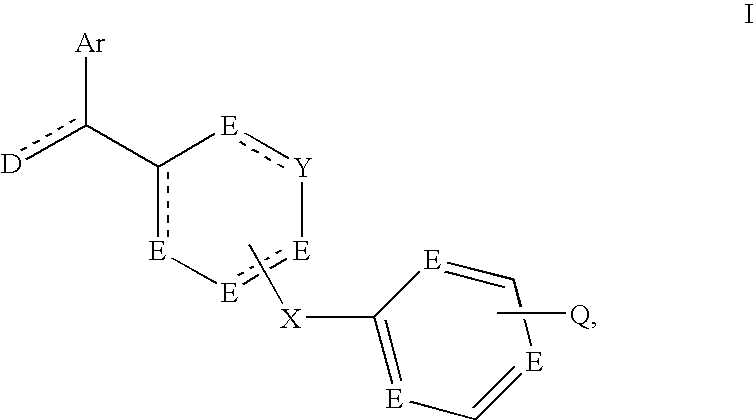(1H-indol-7-yl)-(pyrimidin-2-ylamino)methanone derivatives and related compounds as IGF-R1 inhibitors for the treatment of cancer
- Summary
- Abstract
- Description
- Claims
- Application Information
AI Technical Summary
Benefits of technology
Problems solved by technology
Method used
Image
Examples
working examples
Example 1
Preparation of (2-chloropyrimidin-4-yl)quinolin-3-ylamine
[0203]50 g (0.34 mol) of 2,4-dichloropyrimidine and 50 g (0.35 mol) of 3-amino-quinoline are combined and kept at the boil under reflux for 50 h in 400 ml of 2-propanol with 100 ml of ethyldiisopropylamine. The reaction mixture is poured into 3 l of ice-water, the precipitate is filtered off with suction and washed with water. The residue is recrystallised from acetone, giving 60 g of pale-grey crystals (m.p.: 140-143° C.) (2-chloropyrimidin-4-yl)quinolin-3-ylamine.
example 2
Preparation of (4-aminophenyl)-(2,3-dihydro-1H-indol-7-yl)-methanone
[0204]5 g (42 mmol) of indoline are dissolved in 50 ml of toluene. In a separate flask, 70 ml of toluene are cooled to 5° C., and 100 ml of boron trichloride (10% solution in xylene) are added dropwise at this temperature under nitrogen. The indoline is subsequently added dropwise to this solution at 5-10° C., and 5.4 g (46 mmol) of 4-aminobenzonitrile are subsequently added in portions over the course of 30 min. The mixture is stirred at 5-10° for a further 15 min, and 6.7 g (50 mmol) of aluminium chloride are then added in portions at the temperature indicated. The mixture is heated under reflux for 6 h. For work-up, the reaction mixture is cooled to 70° C., and 10 ml of water are added dropwise, during which the temperature rises slightly and the solution becomes cloudy. 60 ml of 2 N hydrochloric acid are subsequently added, during which a clear solution is again formed, and the mixture is warmed under reflux for...
example 3
Preparation of (2,3-dihydro-1H-indol-7-yl)-{4-[4-(quinolin-3yl-amino)pyrimidin-2-ylamino]phenyl}methanone
[0216]200 mg (0.84 mmol) of (4-aminophenyl)-(2,3-dihydro-1H-indol-7-yl)methanone and 215 mg (0.84 mmol) of (2-chloropyrimidin-4-yl)quinolin-3-ylamine are warmed at 120° C. for 2 h in 2 ml of DMSO. The organic phase is stirred with ethyl acetate and water and purified by chromatography over silica gel after phase separation, drying and evaporation, giving 500 mg of (2,3-di-hydro-1H-indol-7-yl)-{4-[4-(quinolin-3ylaminopyrimidin-2-ylamino]phenyl}-methanone. (M.p.: 235-238° C.)
[0217]The following is also prepared in this way:[0218](2,3-dihydro-1H-indol-7-yl)-{4-[2-(quinolin-3-ylamino)pyrimidin-4-ylamino]-phenyl}methanone.
PUM
| Property | Measurement | Unit |
|---|---|---|
| pressure | aaaaa | aaaaa |
| temperatures | aaaaa | aaaaa |
| temperatures | aaaaa | aaaaa |
Abstract
Description
Claims
Application Information
 Login to View More
Login to View More - R&D
- Intellectual Property
- Life Sciences
- Materials
- Tech Scout
- Unparalleled Data Quality
- Higher Quality Content
- 60% Fewer Hallucinations
Browse by: Latest US Patents, China's latest patents, Technical Efficacy Thesaurus, Application Domain, Technology Topic, Popular Technical Reports.
© 2025 PatSnap. All rights reserved.Legal|Privacy policy|Modern Slavery Act Transparency Statement|Sitemap|About US| Contact US: help@patsnap.com



